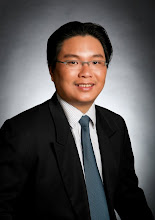Hi Sunny
Please elaborate more on UTM.
Is it a more effective method as compared to other Heuristics?
Is model drawing or Guess and Check a waste of time?
Will the child be confused if he/she is taught a different method from schools?
Concerned parents
Hi Sunny,
Good Afternoon Sir,
As the name of your blog suggests, there is no better way to learn more about UTM than from the guru himself.
As compared to Model Drawing, UTM lacks the visual impact which enables a student to see Maths,so to speak.
In what way is UTM a more effective method than MD?
Could you help to illustrate with some examples?
Is UTM within MOE Maths syllabus?
Interested parents
From the desk of Sunny Tan ... ...
UTM RESEARCH BACKGROUD
The Unit Transfer Method is a fundamentally sound approach with research based on Teacher Work Series publication. Unit Transfer Method uses ratio with tabulation to help child to effectively analyze and solve challenging mathematical problems. This simple, logical yet powerful problem-solving technique is an alternative to the model approach and the algebraic framework approach.
MOE SYLLABUS
Reference to MOE forum replies “Different Approaches taught for Mathematical Techniques” dated 12th Feb 2007, Ms Ho Peng, Director, Curriculum Planning and Development.
“Other than the model drawing approach, pupils are also taught different problem solving methods. They are encouraged to try different approaches and have the flexibility to choose the method that works best for them in solving the problems’
“In the marking of PSLE mathematics, pupils are not restricted to the use of any one particular method. All mathematically correct solutions are acceptable”
In the replies above, the Ministry of Education will accept any mathematically correct method in the PSLE. In fact, the reply mentioned that pupils need a wider repertoire of approaches to work with more challenging problems.
The UTM is very effective in solving problems involving the Before and After Concept, which is one of the heuristics stipulated in the MOE curriculum.
PROBLEM SOLVING HEURISTICS
MOE has recommended 11 problem solving heuristics in primary level. Every heuristics plays a role in problem solving. The common misconception in many parents is that many are trying to search for the “holy Grail” or the most “superior” problem solving methods for their child.
Many parents have always raised these concerns during my seminar, “Is guess and check or model drawing a waste of time?” To answer these concerns, we have to ask ourselves "What is heuristics?"
Heuristics are methods that helps in problem solving. Heuristics does not guarantee a solution.
When approaching the problem, the child first understands the problem, chooses the method and carry out the plan. If it doesn’t work, the method should be discarded and a new method should be choose to solve the problem. However, many pupils or even us will “stubbornly” continue to usie the initial method even it doesn’t work!
UTM VERSUS MODEL APPROACH
As mentioned, many parents are guilty of searching for the “Holy Grail” or the most “Superior” problem solving method. We all know in fact, they never or will never exist.
Different children have different learning style - right and left brain dominant learners.
The left brain learners are strong in logical and analytical thinking while the right brain learner seeks to determine the spatial/visual relationships of all the parts.
The question of which is more superior method is therefore very subjective. Therefore, we cannot answer on behalf of our child. What is important as parents, we should equip the child with different approaches so that they have the flexibility to choose the method that works best for them in solving the problems.
The fundamental concept of the model approach and UTM utilizes ratio. Model drawing is visual or UTM uses tabulation. The combination of Model Approach and Unit Transfer Method utilize the left and the right brain- an integrated "whole" brain approach to maximize the untapped potential of the child.
VISUAL PROCESSING TECHNIQUE
“Do you know Guess and Check can be solved just by using 3 steps?”
“Do you know there are other ways to draw model other than horizontal bar?
By changing the orientation of the model, the answers is staring in front of them!
These are some of the topics that will be covered in the Parents’ Seminar.











